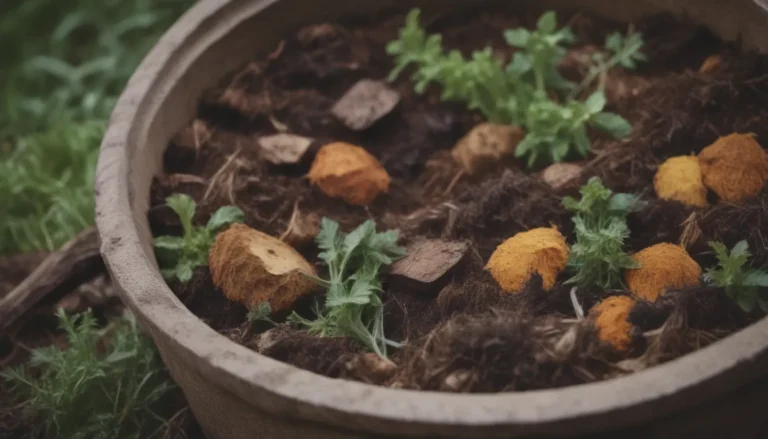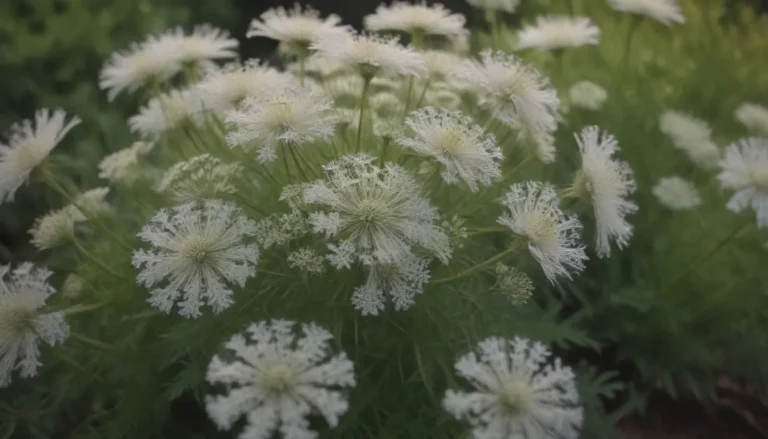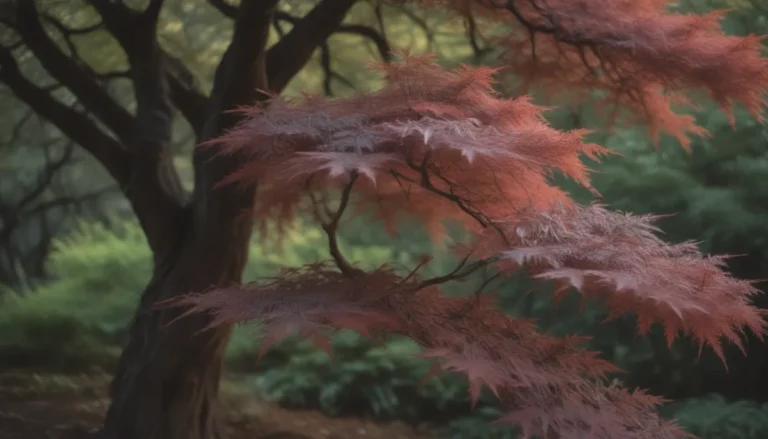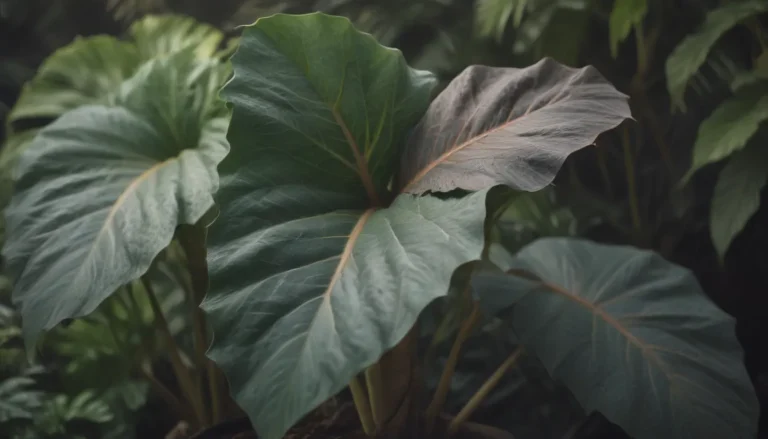Comprehensive Guide on Growing and Caring for Hinoki Cypress Trees

Are you looking to add a touch of elegance and serenity to your garden? The Hinoki cypress tree might just be the perfect choice for you. This tall, evergreen coniferous tree is native to southern Japan and is known for its spreading horizontal branches that droop at the tips. Whether you are interested in creating a privacy screen or cultivating a bonsai tree, the Hinoki cypress is a versatile and stunning addition to any landscape.
In this in-depth guide, we will explore everything you need to know about growing and caring for Hinoki cypress trees. From light and soil requirements to pruning and propagation techniques, we’ve got you covered. So, grab your gardening gloves and let’s dive into the wonderful world of Hinoki cypress!
Understanding the Hinoki Cypress Tree
Before we delve into the specifics of caring for a Hinoki cypress tree, let’s take a moment to appreciate its beauty and unique characteristics. Here are some key points to keep in mind when considering this lovely conifer for your garden:
-
Origin: Hailing from southern Japan, the Hinoki cypress is a staple of traditional Japanese gardens and landscapes.
-
Growth Rate: Hinoki cypress trees have a slow to medium growth rate, typically adding about 12 inches in height per year. Some cultivars may grow even more slowly.
-
Hardiness Zones: These trees thrive in moist, moderate zones, specifically USDA zones 5 to 8.
-
Light Requirements: Hinoki cypress trees require at least six hours of sunlight daily, preferably in a location with full sun. However, in hot climates, direct afternoon sun should be avoided to prevent sun scorch.
-
Soil Preference: The ideal soil for Hinoki cypress is slightly acidic, with a pH range of 5.0 to 6.0. It should also be well-drained to prevent waterlogging.
Essential Care Tips for Hinoki Cypress Trees
Light
Ensuring that your Hinoki cypress tree receives adequate sunlight is crucial for its growth and overall health. Here are some tips to keep in mind:
- Aim for at least six hours of sunlight daily.
- Avoid direct afternoon sun in hot climates to prevent sun scorch.
Soil
Creating the right soil environment for your Hinoki cypress tree can make a significant difference in its well-being. Consider the following soil tips:
- Choose slightly acidic soil with a pH range of 5.0 to 6.0.
- Maintain soil moisture by using mulch around the tree’s base.
- Opt for porous and well-drained soil to prevent water accumulation.
Water
Proper watering is essential for the initial establishment and ongoing care of your Hinoki cypress tree. Here are some watering guidelines to follow:
- Water newly planted trees weekly during the first year.
- Keep the soil moist during spring, summer, and fall.
- Reduce watering in winter to allow the tree to prepare for harsh weather conditions.
Temperature and Humidity
Creating a suitable environment in terms of temperature and humidity can enhance the growth of your Hinoki cypress tree. Consider the following factors:
- Hinoki cypress trees prefer a humid climate.
- Ideal hardiness zones for these trees are USDA zones 5 to 8.
Fertilizer
Feeding your Hinoki cypress tree with the right nutrients can promote healthy growth. Here are some fertilizer tips to consider:
- Perform a soil test to determine if your soil is deficient in nutrients.
- Use a slow-release, acidifying fertilizer for newly planted trees.
- Follow the product label instructions for the correct amount of fertilizer to apply.
Hinoki Cypress Tree Varieties
With over 200 cultivars of Hinoki cypress trees available, you’ll find a wide range of options to choose from. Whether you’re looking for a dwarf bonsai type or a taller cultivar, there’s something for every garden. Here are some popular small cultivars to consider:
- ‘Butter Ball’
- ‘Confucious’
- ‘Ellie B’
- ‘Gemstone’
- ‘Gracilis’
- ‘Fernspray Gold’
- ‘Just Dandy’
- ‘Kosteri’
- ‘Melody’
- ‘Nana’
- ‘Nana Gracilis’
- ‘Nana Lutea’
- ‘Reis Dwarf’
- ‘Sunny Swirl’
- ‘Tetragona Aurea’
Explore these and other cultivars to find the perfect Hinoki cypress tree for your garden.
Pruning
Proper pruning is essential to maintain the health and appearance of your Hinoki cypress tree. Follow these guidelines for successful pruning:
- Prune when the upright branches fork, cutting into new wood.
- Remove dead or out-of-place branches to keep the tree looking its best.
- Ideally, prune during the summer months for optimal results.
Propagating Hinoki Cypress Trees
If you’re interested in propagating your Hinoki cypress tree, here are some tips to consider:
- Propagate by cuttings in late summer, fall, or winter.
- Consider sowing seeds outdoors in spring for another propagation method.
- Vegetative propagation from cuttings is the preferred method for maintaining the tree’s characteristics.
Potting and Repotting
For dwarf Hinoki cypress varieties that can be grown in containers, here are some potting and repotting tips to keep in mind:
- Choose a pot with large drain holes for proper drainage.
- Minimize repotting to avoid stressing the tree.
- When repotting, use well-draining, rich potting soil for optimal growth.
Overwintering
Protecting your Hinoki cypress tree during the winter months is crucial for its survival. Consider these overwintering tips:
- Wrap trees in burlap or create a burlap tent to shield them from frost and icy winds.
- For potted trees, consider winterizing and providing continued sun exposure in an unheated greenhouse or enclosed porch.
Common Pests & Plant Diseases
Despite being relatively low-maintenance, Hinoki cypress trees are susceptible to certain pests and diseases. Here are some common issues to watch out for:
- Juniper scale insects can cause foliage discoloration; manage infestations with appropriate insecticides.
- Bagworms may form nests that can be manually removed.
- Blight, a fungal disease, primarily affects young trees; control by watering in the morning and avoiding water on foliage.
Common Problems With Hinoki Cypress Trees
While Hinoki cypress trees are generally resilient, they may encounter certain issues that can impact their health. Here are some common problems to watch for:
- Yellowing or browning of needles may indicate overwatering, underwatering, poor drainage, or nutrient deficiencies.
- Soil pH levels should be around 6.0 to prevent iron absorption issues.
- Monitor your tree for signs of stress and adjust care as needed.
Conclusion
In conclusion, growing and caring for Hinoki cypress trees can be a rewarding experience for any gardener. By following the tips and guidelines outlined in this comprehensive guide, you can ensure that your Hinoki cypress thrives and flourishes in your garden. Whether you’re looking to create a privacy screen, cultivate a bonsai tree, or simply enhance your landscape, the Hinoki cypress is a versatile and stunning addition to any outdoor space. So, roll up your sleeves, get your gardening tools ready, and let your Hinoki cypress tree journey begin!





